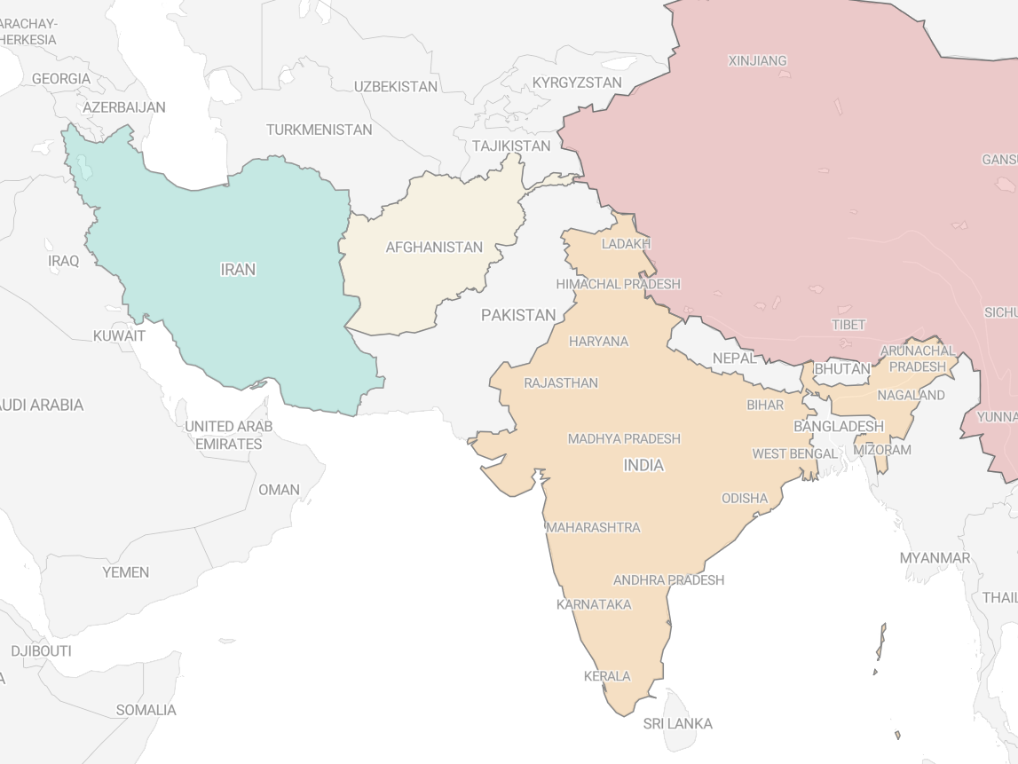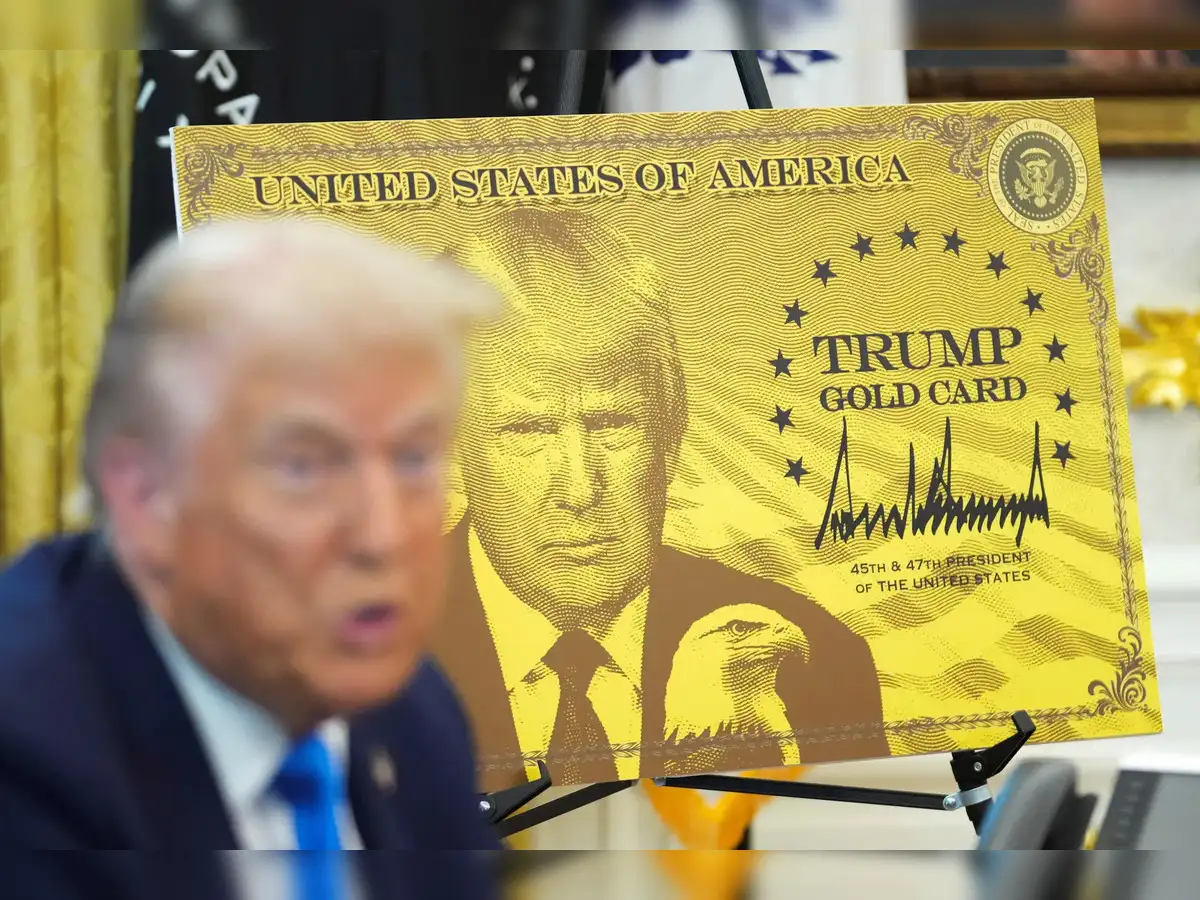Description

Disclaimer: Copyright infringement not intended.
Context
- India backed Iran on its strikes on alleged terror camps in Pakistan’s Balochistan Province, calling it an act of “self-defence”.
India Iran Relations
Background
- India-Iran relations span centuries marked by meaningful interactions.
- The two countries shared a border till 1947 and share several common features in their language, culture and traditions.
- Independent India and Iran established diplomatic links on 15 March 1950.
Diplomatic Engagements:
- Diplomatic relations between the two countries were formalized in 1950, with embassies established in Tehran and New Delhi.
High-Level Visits:
- High-level visits between leaders of both nations have been frequent, enhancing bilateral cooperation.
- For instance, Prime Minister Narendra Modi's visit to Iran in 2016 strengthened diplomatic ties.
Economic Cooperation:
Trade Relations:
- Bilateral trade has witnessed steady growth, with both countries exploring avenues to enhance economic collaboration.
- India-Iran bilateral trade during the FY 2022-23 was $2.33 billion, registering a growth of 21.76% YOY.
- During the period, India's export to Iran was $1.66 billion (a growth of 14.34% YOY) and India's import from Iran was $ 672.12 million (a growth of 45.05% YOY).
Energy Partnership:
- India is a significant importer of Iranian oil.
- The Chabahar Port, developed with Indian investment, provides a crucial gateway for trade and energy supplies.
- The India-Iran-Afghanistan Trilateral Agreement facilitates easier trade and connectivity.
Investment Initiatives:
- Both nations have engaged in discussions to boost investments.
- Indian companies have shown interest in sectors such as infrastructure, petrochemicals, and manufacturing.
Strategic Partnerships:
Chabahar Port:
- India's development of the Chabahar Port in Iran aims to create a strategic transit route, bypassing Pakistan, and enhancing connectivity to Afghanistan and Central Asia.
Security Cooperation:
- Both countries share concerns regarding regional security, leading to collaborative efforts in countering terrorism and extremism.
Recent Agreements and Initiatives:
Farzad-B Gas Field:
- India has expressed interest in developing the Farzad-B gas field, signaling a commitment to energy cooperation.
INSTC (International North-South Transport Corridor):
- Both countries are key stakeholders in the INSTC, a major transportation network connecting India and Iran to Europe.
Banking and Financial Agreements:
- Efforts to establish a special purpose vehicle (INSTEX-like mechanism) for facilitating trade despite international sanctions demonstrate the resilience of economic cooperation.
Health Diplomacy:
- Collaborative efforts during the COVID-19 pandemic, such as the provision of medical supplies and joint research initiatives, showcase the resilience of the relationship during global crises.

Challenges facing the India-Iran relations
International Sanctions:
- Iran has been subject to various international sanctions, particularly those related to its nuclear program.
- These sanctions have limited the scope of economic cooperation between India and Iran, hindering trade and investment opportunities.
- The Countering America's Adversaries Through Sanctions Act (CAATSA) complicates India's relations with Iran, as it poses a dilemma for India to balance its strategic autonomy with adherence to U.S. sanctions.
Nuclear Cooperation and JCPOA:
- The Joint Comprehensive Plan of Action (JCPOA), an agreement aimed at limiting Iran's nuclear program, and discussions on nuclear cooperation have faced challenges due to international dynamics.
- The U.S. withdrawal from the JCPOA and subsequent developments have added complexities to nuclear-related engagements.
|
CAATSA (Countering America's Adversaries Through Sanctions Act) and the Joint Comprehensive Plan of Action (JCPOA)
Both CAATSA (Countering America's Adversaries Through Sanctions Act) and the Joint Comprehensive Plan of Action (JCPOA)are significant factors influencing India-Iran relations.
CAATSA (Countering America's Adversaries Through Sanctions Act):
- CAATSA, enacted by the United States, imposes sanctions on countries engaging in significant transactions with Iran, Russia, and North Korea. India, being a strategic partner of the U.S., faces challenges in its relationship with Iran due to the extraterritorial nature of these sanctions.
- India has to carefully navigate its economic and energy ties with Iran while complying with CAATSA, which may impact defense and energy cooperation between India and the U.S.
Joint Comprehensive Plan of Action (JCPOA):
- The JCPOA, also known as the Iran Nuclear Deal, was a landmark agreement aimed at limiting Iran's nuclear program in exchange for sanctions relief. The U.S. withdrawal from the JCPOA in 2018 and the reimposition of sanctions created challenges for Iran's economy and affected India's energy imports from Iran.
- India, while expressing its commitment to the JCPOA, has had to find a delicate balance between adhering to the deal and complying with evolving international dynamics and U.S. sanctions policies.
- Both CAATSA and the JCPOA add layers of complexity to India's relations with Iran, given India's strategic ties with the U.S. Navigating these challenges requires adept diplomacy to maintain a balance between economic interests, regional stability, and adherence to international agreements. It's crucial for India to engage in nuanced diplomacy to safeguard its interests while addressing the concerns of both Iran and the United States.
|
Energy Dependency and Geopolitical Pressures:
- India's dependency on Iranian oil has been a point of contention, especially considering the fluctuating geopolitical dynamics in the region.
- Balancing energy needs with geopolitical pressures, such as those from the United States, poses a challenge to India's relationship with Iran.
Regional Security Dynamics:
- The security situation in the Middle East, including conflicts in Syria, Yemen, and the rivalry between Iran and Saudi Arabia, can indirectly impact India-Iran relations.
- Balancing relationships in the region is a diplomatic challenge for both nations.
Challenges in Chabahar Development:
- Despite its strategic significance, the development of Chabahar Port has faced delays, impacting India's efforts to establish a robust trade route to Afghanistan and Central Asia.
- Logistical, financial, and geopolitical challenges have contributed to these delays.
Terrorism and Security Concerns:
- Both India and Iran face threats from terrorism and extremism.
- The activities of terrorist groups in the region can strain the security cooperation between the two nations.
Cultural Misunderstandings:
- Despite historical and cultural ties, there may be occasional misunderstandings or misinterpretations that can strain people-to-people connections.
- Bridging cultural gaps and promoting a better understanding of each other's societies is an ongoing challenge.
Divergent Regional Priorities:
- India and Iran may have differing priorities in the region. While India is focused on economic and infrastructure development, Iran's concerns may be more influenced by security considerations and its regional alliances.
Geostrategic Competition:
- The region witnesses intense geopolitical competition, with various external players vying for influence.
- Navigating this complex landscape without compromising national interests is a significant challenge for both India and Iran.
US-India Relations Impact:
- India's relationship with the United States, particularly in the context of the U.S.-Iran relationship, can impact its interactions with Iran.
- Striking a balance between maintaining ties with both countries amid their geopolitical differences poses a diplomatic challenge for India.
Addressing these challenges requires sustained diplomatic efforts, open communication, and flexibility in navigating the complex geopolitical landscape. Despite these hurdles, the long-standing historical ties and shared interests provide a foundation for both countries to overcome these challenges and strengthen their bilateral relationship.
Way Ahead
Diplomatic Engagement:
- Foster regular high-level diplomatic dialogues to build trust.
- Develop conflict resolution mechanisms for regional stability.
Economic Collaboration:
- Diversify trade partnerships to reduce dependency.
- Accelerate Chabahar Port development for strategic trade routes.
- Strengthen the framework for bilateral investments.
Strategic Cooperation:
- Collaborate on regional security initiatives and counter-terrorism.
- Navigate global power dynamics with a nuanced approach.
Cultural and People-to-People Ties:
- Promote cultural exchanges and encourage tourism.
- Enhance mutual understanding to avoid cultural misunderstandings.
Energy Cooperation:
- Explore joint ventures in renewable energy projects.
- Negotiate stable and reliable energy agreements.
Address Nuclear Cooperation Concerns:
- Work diplomatically to resolve nuclear-related concerns.
- Advocate for re-engagement in the JCPOA for a diplomatic resolution.
Implementing these measures will contribute to overcoming challenges and fostering a more stable and prosperous relationship between India and Iran.
|
CHABAHAR PORT
- The Chabahar Port holds strategic and economic significance for India and Iran, and it also has broader geopolitical implications for the region.
- The Chabahar Port, located on the southeastern coast of Iran, holds paramount significance in India's pursuit of enhancing regional connectivity, bolstering economic ties, and diversifying trade routes.
- This strategic port, developed through Indian investment, serves as a linchpin in India's geopolitical and economic endeavors, particularly in circumventing challenges posed by its western neighbor, Pakistan.
Key Significances:
Strategic Bypass of Pakistan:
- Chabahar Port provides India with a strategic alternative to traditional trade routes through Pakistan.
- It enables direct sea access to Afghanistan and Central Asia, reducing reliance on Pakistan's goodwill for land-based transit.
Enhanced Connectivity with Central Asia:
- Positioned at the crossroads of South Asia, Central Asia, and the Middle East, Chabahar acts as a gateway for India to establish robust trade and transport links with landlocked Afghanistan and Central Asian nations.
- This fosters economic integration and geopolitical influence in the region.
International North-South Transport Corridor (INSTC):
- Chabahar is a key component of the INSTC, a multimodal network connecting India to Russia and Europe via Iran and Central Asia.
- The port's role in the INSTC facilitates seamless movement of goods, reducing transportation costs and enhancing India's economic competitiveness.
Diversification of Trade Routes:
- Chabahar Port allows India to diversify its maritime trade routes, decreasing vulnerability to disruptions in the Strait of Hormuz and fostering maritime security. This diversification is crucial for India's economic resilience and stability.
Economic Development and Investment Opportunities:
- India's substantial investment in Chabahar's development translates into economic opportunities, job creation, and infrastructure growth in the region.
- The port's expansion catalyzes economic development in Iran and creates a platform for Indian businesses to explore new markets.
Energy Security:
- Chabahar facilitates India's energy security by providing a direct route for the import of oil and gas from Iran.
- This strategic energy corridor contributes to India's efforts to secure vital energy resources and diversify its energy mix.
Strategic Counterbalance:
- Chabahar Port represents India's strategic counterbalance to China's influence in the region, particularly its investments in the Gwadar Port in Pakistan. India's foothold in Chabahar serves as a diplomatic asset in shaping regional geopolitics.
Cultural and Diplomatic Ties:
- Beyond its economic and strategic significance, the Chabahar Port stands as a symbol of the enduring cultural and diplomatic ties between India and Iran.
- The collaborative efforts in developing this port reflect a shared commitment to fostering mutual understanding and cooperation.
Conclusion:
- Chabahar Port emerges as a pivotal component of India's regional engagement strategy, offering unparalleled advantages in terms of trade diversification, strategic influence, and economic development.
- Its continued development and operationalization are integral to India's pursuit of a secure, connected, and prosperous geopolitical landscape in the broader South Asian and Central Asian regions.
|

|
PRACTICE QUESTION
Q. Discuss the various dimensions of India-Iran relations, highlighting historical ties, economic collaborations, and strategic partnerships. Assess the challenges faced by both countries and propose solutions. Evaluate the significance of Chabahar Port in shaping bilateral ties and its impact on regional connectivity.
PRACTICE QUESTION
Q. Examine the challenges in India-Iran relations, considering geopolitical complexities, international sanctions, and regional security dynamics. Evaluate the impact of these challenges on diplomatic ties and propose viable solutions to foster a more resilient and cooperative relationship.
|












